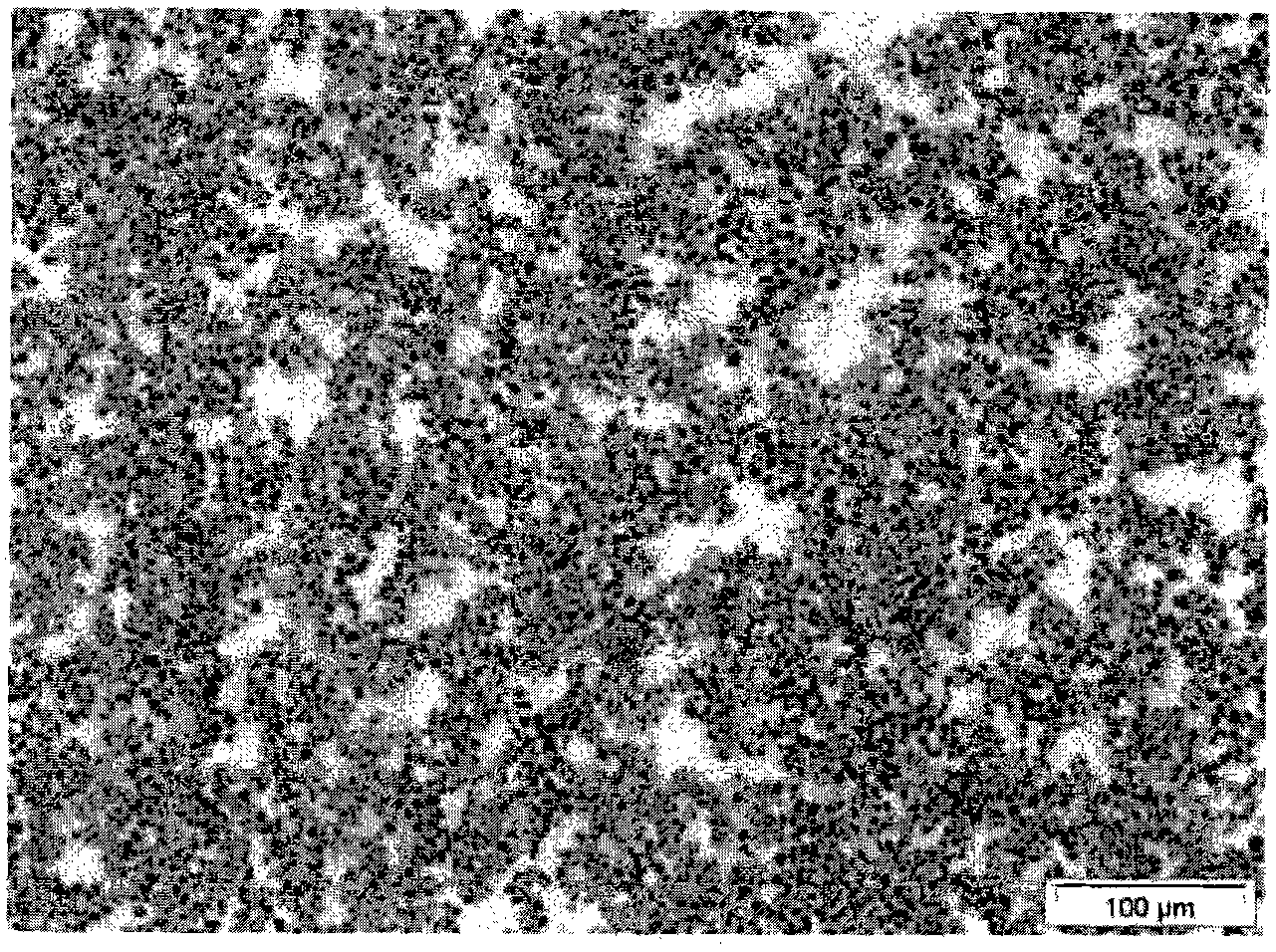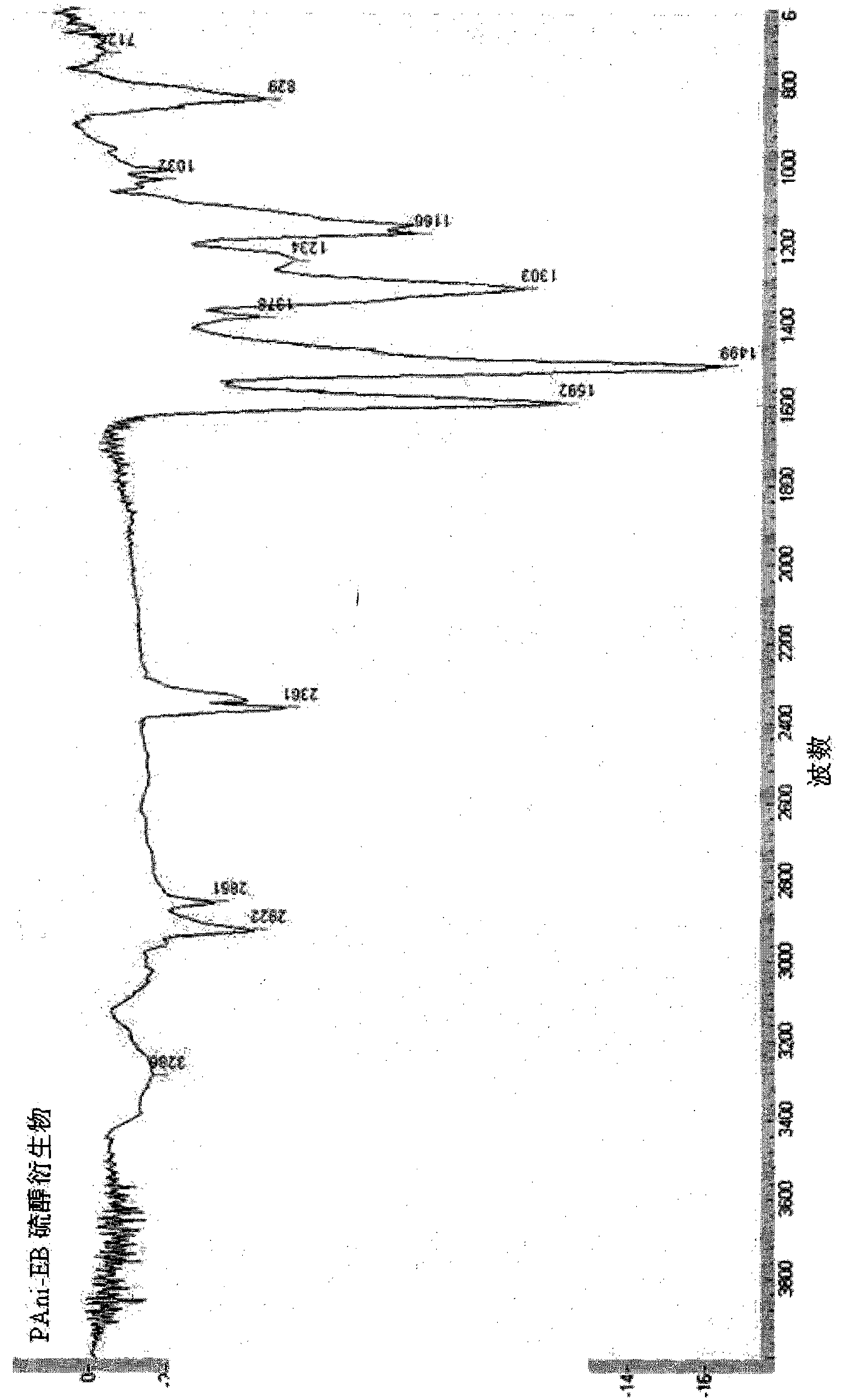Production and use of novel polyanilines for treating water
A technology of polyaniline and water treatment, applied in water/sewage treatment, water/sludge/sewage treatment, gas treatment, etc., which can solve problems such as uneven coating, cracks, and flaky coating
- Summary
- Abstract
- Description
- Claims
- Application Information
AI Technical Summary
Problems solved by technology
Method used
Image
Examples
Embodiment 1
[0107] The synthesis of embodiment 1-polyaniline dodecanethiol:
[0108] (poly(p-phenylene-amine-imine)-p-dodecanethiol)
[0109] Thiol derivatives of polyaniline were prepared in an oxidative, acid-catalyzed precipitation polymerization in aqueous solution. Aniline is polymerized with dodecanethiol (DCT). As the thiol radicals attach to the polyaniline groups, the polymerization chain reaction is correspondingly interrupted.
[0110]
[0111] Scheme 2: Reaction scheme for the oxidative polymerization of aniline and DCT; n = ~5 to 50, depending on the choice of reaction conditions.
[0112] The chemicals required for the synthesis are listed in Table 1 below.
[0113]
[0114]
[0115] Table 1: Substances used for polyaniline synthesis
[0116] Synthetic description:
[0117] 1) 3ml (33mmol) of aniline and 0.35ml (1.5mmol) of dodecanethiol were successively placed in a glass beaker. Mix the mixture thoroughly.
[0118] 2) Put 34g (179mmol) p-TSA of p-toluenes...
Embodiment 2
[0146] Example 2 - Dispersion of polyaniline:
[0147] The starting material for the dispersion is a powder of polyaniline in the form of a non-conducting base (EB).
[0148] 1) Preparation of 2.5-% (w / v) PAni-EB-NMP stock dispersion
[0149] 2.8 g of powdered polyaniline in base form (EB) was pulverized by mortar and mortar for about 5 minutes. Add 5ml of 2-propanol to the powder. The mixture was homogenized in a mortar and pestle for approximately 5 minutes. The slurry was then transferred to a beaker containing 100 ml of N-methyl-2-pyrrolidone (NMP). The mixture was then dispersed with a homogenizer at 10000 rpm. The dispersion was then heated to 50°C and stirred on a magnetic stirrer for several hours. To remove any agglomerates present, the dispersion thus treated is filtered through a cellulose filter.
[0150] The dispersion prepared in the first step is hereinafter referred to as PAni-EB-NMP 2.5% (w / v) stock dispersion.
[0151] 2) Preparation of 2-% (w / v) PAn...
Embodiment 3-
[0156] Embodiment 3-preparation embodiment, the coating of steel plate:
[0157] Material:
[0158] ES Dispersion 1% (w / v)
[0159] steel foil
[0160] Doctor coater
[0161] scraper (doctor knife)
[0162] The purified and defatted foil sections are placed on a flat support surface over which the spatula can be pulled. The doctor blade has a width (internal) of 73 mm, which determines the width of the coating on the steel plate. The gap width between the substrate and the spatula was 50 μm. Place the spatula behind the slide on the substrate. 1 ml of the 1% (w / v) dispersion was placed inside the blade of the spatula. The doctor blade is then drawn on the steel foil at a constant pulling speed of 20 mm / s, leaving a thin film of the coating dispersion on the substrate. The solvent was evaporated with a hot air blower at 200°C (on a desiccator). After evaporation of the solvent, the remaining solvent residue was evaporated at 120 °C in a vacuum drying cabinet. A gree...
PUM
| Property | Measurement | Unit |
|---|---|---|
| degree of polymerization | aaaaa | aaaaa |
Abstract
Description
Claims
Application Information
 Login to View More
Login to View More - R&D
- Intellectual Property
- Life Sciences
- Materials
- Tech Scout
- Unparalleled Data Quality
- Higher Quality Content
- 60% Fewer Hallucinations
Browse by: Latest US Patents, China's latest patents, Technical Efficacy Thesaurus, Application Domain, Technology Topic, Popular Technical Reports.
© 2025 PatSnap. All rights reserved.Legal|Privacy policy|Modern Slavery Act Transparency Statement|Sitemap|About US| Contact US: help@patsnap.com



